
An image courtesy of a Fortune Business Insights report[1] indicates what we'd already suspected: protein bars are booming. But what can manufacturers do to counteract the protein powder supply squeeze? We explore that in this article.
In 2019, the global protein bar market was estimated to be worth $4.66 billion according to the Fortune Business Insights,[1] in a report that projects compounding annual growth through 2027. Whether protein bars are catered to athletes in the sports nutrition niche, busy families in the snack niche, or healthy food supplements in the holistic niche, the market for these functional foods has continually and consistently grown on all fronts.
At the same time, however, protein prices are on the rise again, squeezing manufacturers as consumer demand grows while supply tightens.
Protein bars: a challenging opportunity
When it comes to developing well-dosed protein bars that will meet expectations and bring repeat business, nutrition brands face serious challenges -- both in terms of flavoring and cost management. While some customers in the bodybuilding space demand no less than 23 grams of protein per serving, most consumers have come to accept lower amounts of protein per bar. But can we make up for those lower doses by improving the formula in other ways?
Solution: enhance protein bars with Velositol
There is a compromise to be made between dosage and cost-efficacy, by using an ingredient that can increase muscle protein synthesis -- even if the total amount of protein is not massively dosed. That ingredient is Velositol, a protein-enhancing ingredient made by the industry-leading nutritional supplement ingredient developers at Nutrition21, the sponsors of this article.
Velositol is made from a novel chromium-amylopectin complex that enhances the body's insulin response to protein when taken post workout, and it's the perfect fit for protein bars. The ingredient has been demonstrated to work especially well when alongside lower doses of protein (labeled as a "sub-optimal" dose in research) in a post-workout setting, lending it well to use in protein bars.
This has led us to ask a simple question: Why aren't we seeing more Velositol in protein bars?
One notable person isn't asking that question - he simply made it a reality. His name is Marc Lobliner, and he's using Velositol alongside 15 grams of protein in his Outright Breakfast Bars.
In this article, we recap the research on Velositol, analyze the Outright Breakfast Bar, and discuss how it's a perfect match for protein bars. First, you can see prices on Outright Bar using PricePlow and sign up for our Nutrition21 news alerts to stay up to date on their upcoming research:
See the Velositol-infused Outright Breakfast Bar and Sign Up for Nutrition21 News Alerts
Get Price Alerts
No spam, no scams.
Disclosure: PricePlow relies on pricing from stores with which we have a business relationship. We work hard to keep pricing current, but you may find a better offer.
Posts are sponsored in part by the retailers and/or brands listed on this page.
A primer on Velositol
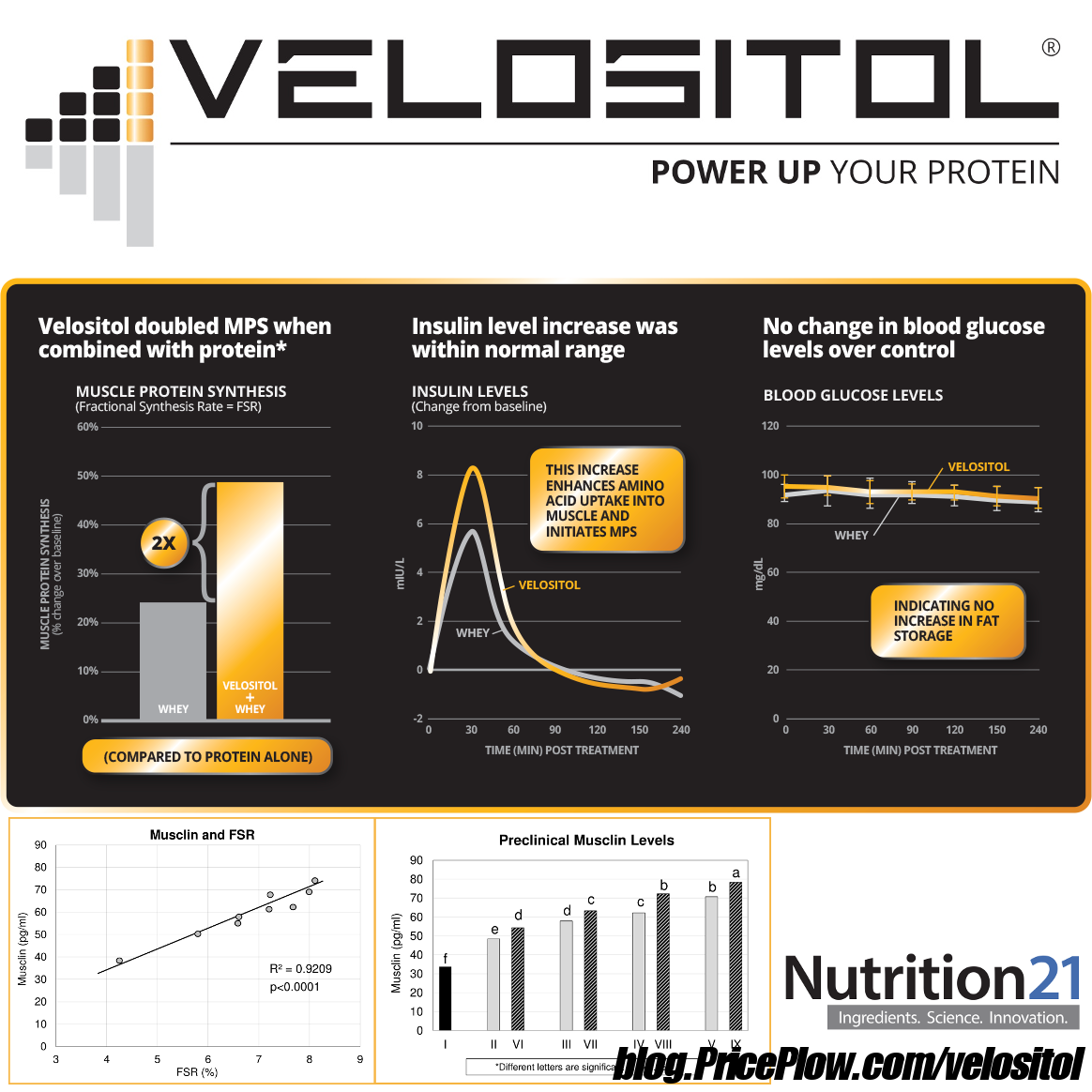
Made by Nutrition 21, the experts in Chromium and Insulin management, Velositol can boost Muscle Protein Synthesis by using chromium and a 'tickle' of insulin-spike from amylopectin!
Nutrition21 has decades of experience with chromium, an essential mineral that's been shown to support diets by improving insulin sensitivity when supplemented. For over two decades, they've sold Chromax, a highly bioavailable chromium picolinate ingredient that now has over 51 human clinical studies.[2]
Knowing that chromium picolinate can improve insulin sensitivity in muscle tissue, Nutrition21 took their expertise to athletes, developing Velositol, a modified-release chromium complex that includes another form of chromium, chromium histidinate to maximize chromium muscle effects and a special form of amylopectin starch.[3] It's meant to be taken alongside protein, and when used in that fashion, can improve exercise-induced muscle protein synthesis (MPS) in a post-workout setting.
Velositol is theorized to work through its ability to enhance insulinogenic response, presumably it can boost the body's amino acid and nutrient uptake into the muscles - especially when taken post-workout. Alongside a solid diet, it can promote an environment leading to a leaner body composition.
Nutrition21 launched Velositol in 2017, issuing the following statement:
"A patented ingredient designed to double the effects of protein and exercise on muscle protein synthesis (MPS). When added to protein, Velositol's novel complex rapidly stimulates insulin release and increases the muscle cell's sensitivity to insulin. This helps to safely increase insulin levels and enhance the body's amino acid uptake, stimulating and boosting MPS. Velositol has attained GRAS (generally regarded as safe) status for 2 grams, to be used in protein drinks (including ready-to-drink and powder), meal replacement bars, energy and protein bars."
-- Nutrition21 Press Release [emphasis ours]
We've seen Velositol used in several protein powders, but not as many protein bars - something we'd love to see in the future. Below, we discuss the available research on Velositol, which greatly contributed to Marc Lobliner's decision to include it in Outright Breakfast Bars:
The Velositol research
In 2017, researchers published a clinical study, testing Velositol with two groups:[4]
- An exercise group that took whey protein post workout
- An exercise group that combined whey protein and Velositol post workout
Post workout, the researchers looked at muscle protein synthesis, which was measured using the fractional rate of protein synthesis (FSR) in skeletal muscle. They concluded that the Velositol + whey group had significantly improved muscle protein synthesis (per FSR measurement) after a single dose![4]
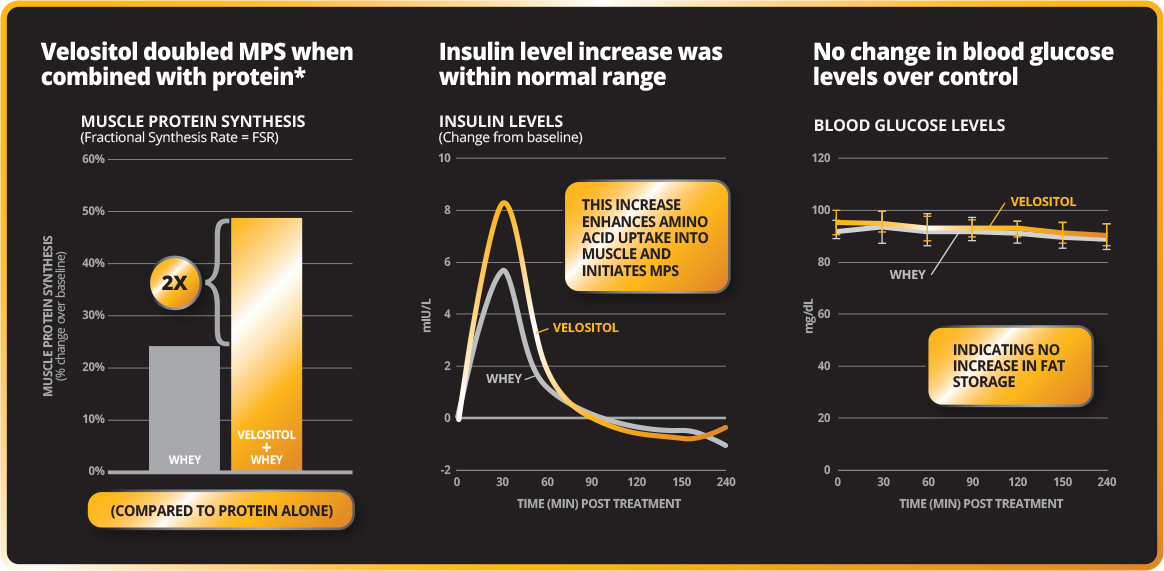
So the ingredient can increase Muscle Protein Synthesis with protein... but NOT add to an increase blood glucose levels?! Color us interested...
But even more importantly in the context of protein bars, the study utilized protein dosages that were "sub-optimal", demonstrating that Velositol could yield significant effects even in the face of lower amounts of protein.
Further research with higher Velositol dosages
As a follow-up, Nutrition21 wanted to see if Velositol could work with larger doses and different types of protein. In the next study, researchers compared three different groups:[5]*
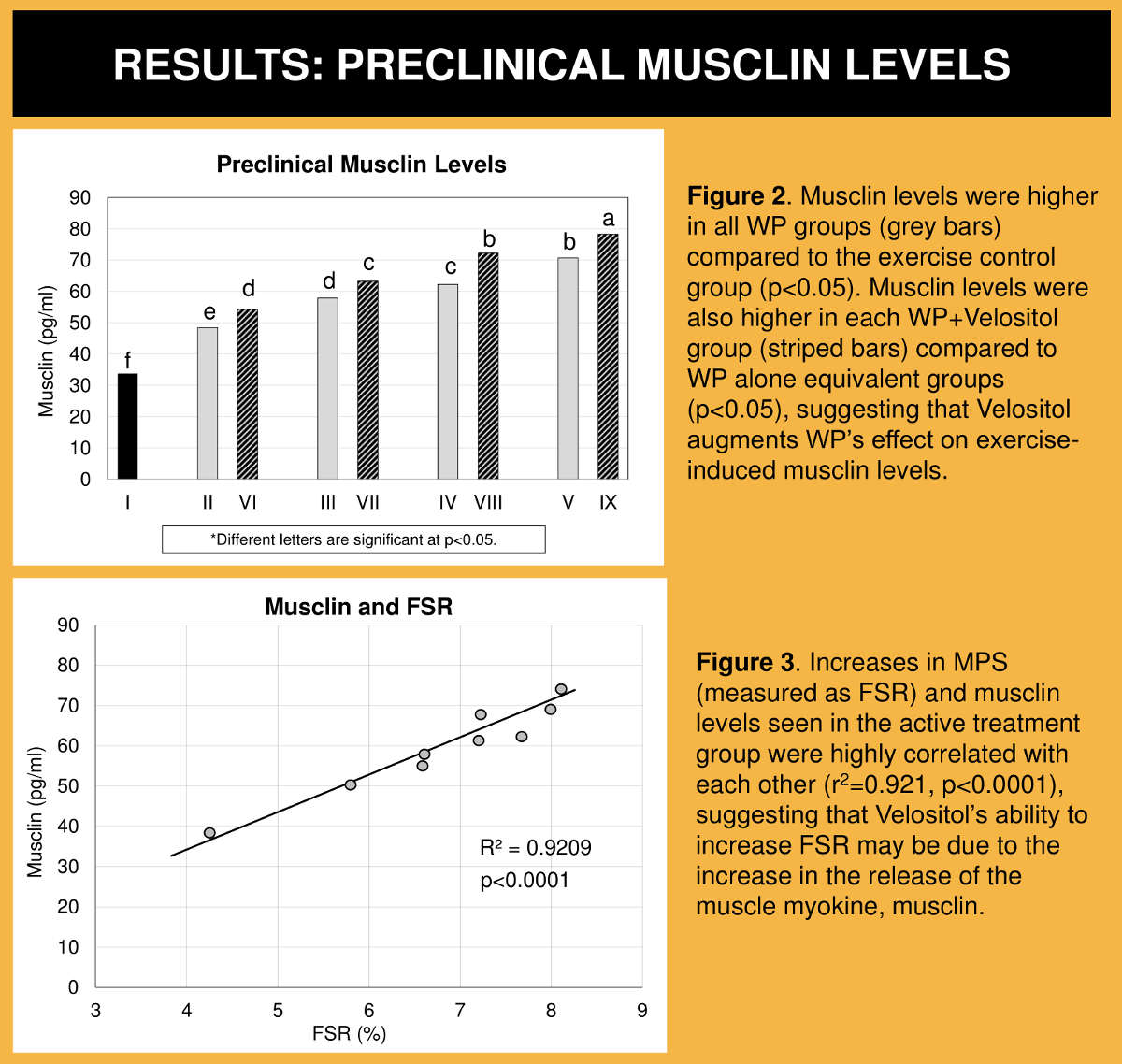
This chart is from a preclinical study,[5] using ascending amounts of whey protein - and the results ascend as well!
- Whey protein in escalating doses (ranging from human equivalents from 6 grams to 40 grams)
- Pea protein (human equivalent of 6 grams)
- BCAA (branched chain amino acids - human equivalent of 6 grams)
The researchers learned that the Velositol + protein groups showed significantly greater muscle protein synthesis versus the protein-only group when compared after treadmill exercise.[5] Velositol continued to provide significantly improved benefits as the protein doses increased, although the effect became less pronounced with greater amounts.
Additionally, the Velositol groups had significantly increased levels of musclin, which is a muscle messenger protein (myokine) that gets released during exercise and leads to muscle protein synthesis and hypertrophy.[6]
Velositol and exercise performance
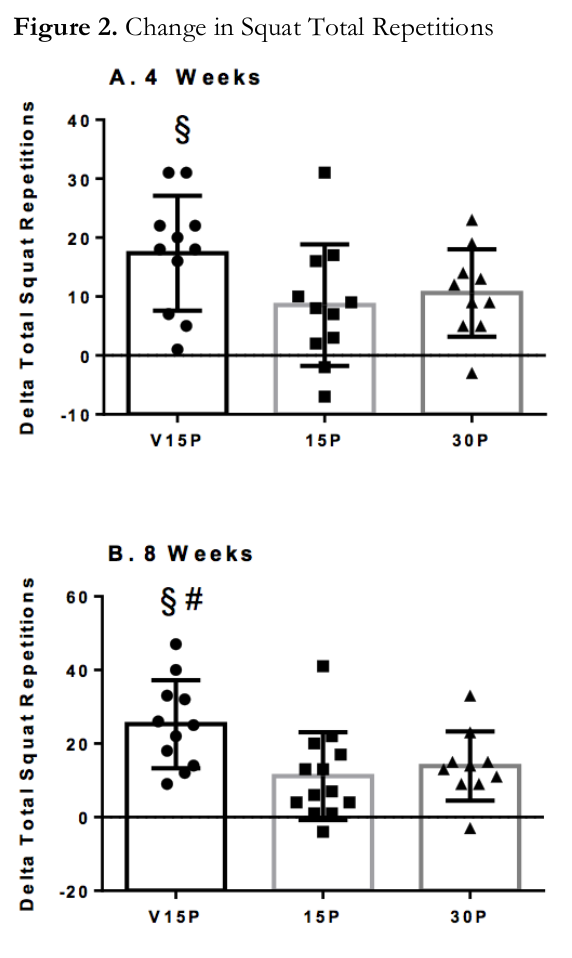
The velositol group had significantly better squat performance, and over time they out-performed both other groups![8]
A new study just published in the Journal of Exercise and Nutrition showed additional benefits in terms of exercise performance.
The double-blind, active controlled study was tested over the course of 8 weeks in 35 recreationally active men that were randomized to one of three groups: 2 grams of Velositol + 15 grams of whey protein isolate, 15 grams of whey protein isolate alone, and 30 grams of whey protein isolate alone. The study concluded that the addition of Velositol to a 15-gram dose of whey protein increased total squat reps, vertical jump power, and vertical jump height to a greater extent than when 15 or even 30 grams of whey protein were consumed alone.[7,8]
You can read more about Velositol in our articles titled "Velositol: Enhancing Muscle Protein Synthesis with Science" and Velositol Increases Exercise Performance: New University Study Published.
With this data in mind, we can see how Velositol is an incredible addition to Outright Breakfast Bars:
The Outright Breakfast Bar
In late 2018, Marc Lobliner, founder of MTS Nutrition and Chief Marketing Officer of Tiger Fitness, decided that there was a massive gap in the protein bar market. At the time, there was a lack of high-protein bars that utilized whole food fat and carbohydrate sources and were free of "filler" carbs and binders.
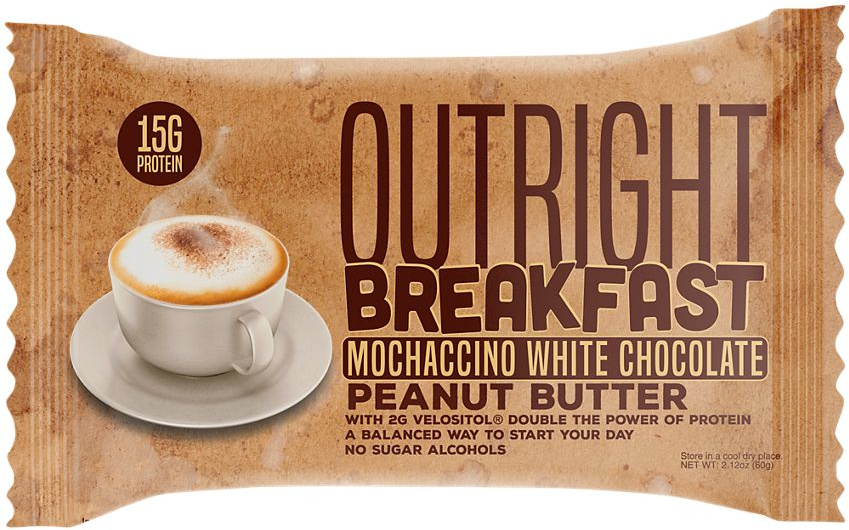
After huge success with his Outright Bar, Marc Lobliner launched his Outright Breakfast Bar, and boosted it with Velositol!
He launched the Outright Bar, initially releasing two flavors that had as few as six ingredients - a dramatic change from the ingredient-packed protein bars traditionally sold into the sports nutrition space that Lobliner was so familiar with.
Over time, Outright Bar exploded, and now has countless flavors and a couple of new product variations as well. One such product is the Outright Breakfast Bar, which includes 15 grams of protein alongside 2 grams of Velositol. With no sugar alcohols included, Outright Breakfast Bar has become an outright delicious way for tens of thousands of diet-conscious consumers to start their days.
Outright Breakfast Bar currently comes in the following variations:
The full label is below:
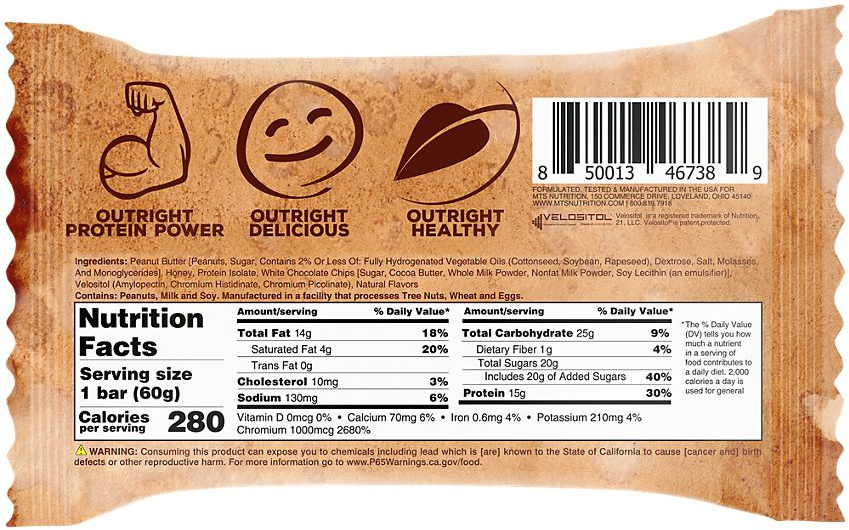
Take 15 grams of protein and squeeze the most out of them with Nutrition21's Velositol. Why don't more protein bar manufacturers do this?!
Outright Breakfast Bars include Velositol to power-up their 15 grams of protein, adding a large dose of an important mineral -- chromium -- to their users' daily intake. The bars are naturally sweetened (primarily with honey), and the added chromium can help increase insulin sensitivity to drive the carbohydrates and protein into muscle cells for Outright's athletic users.
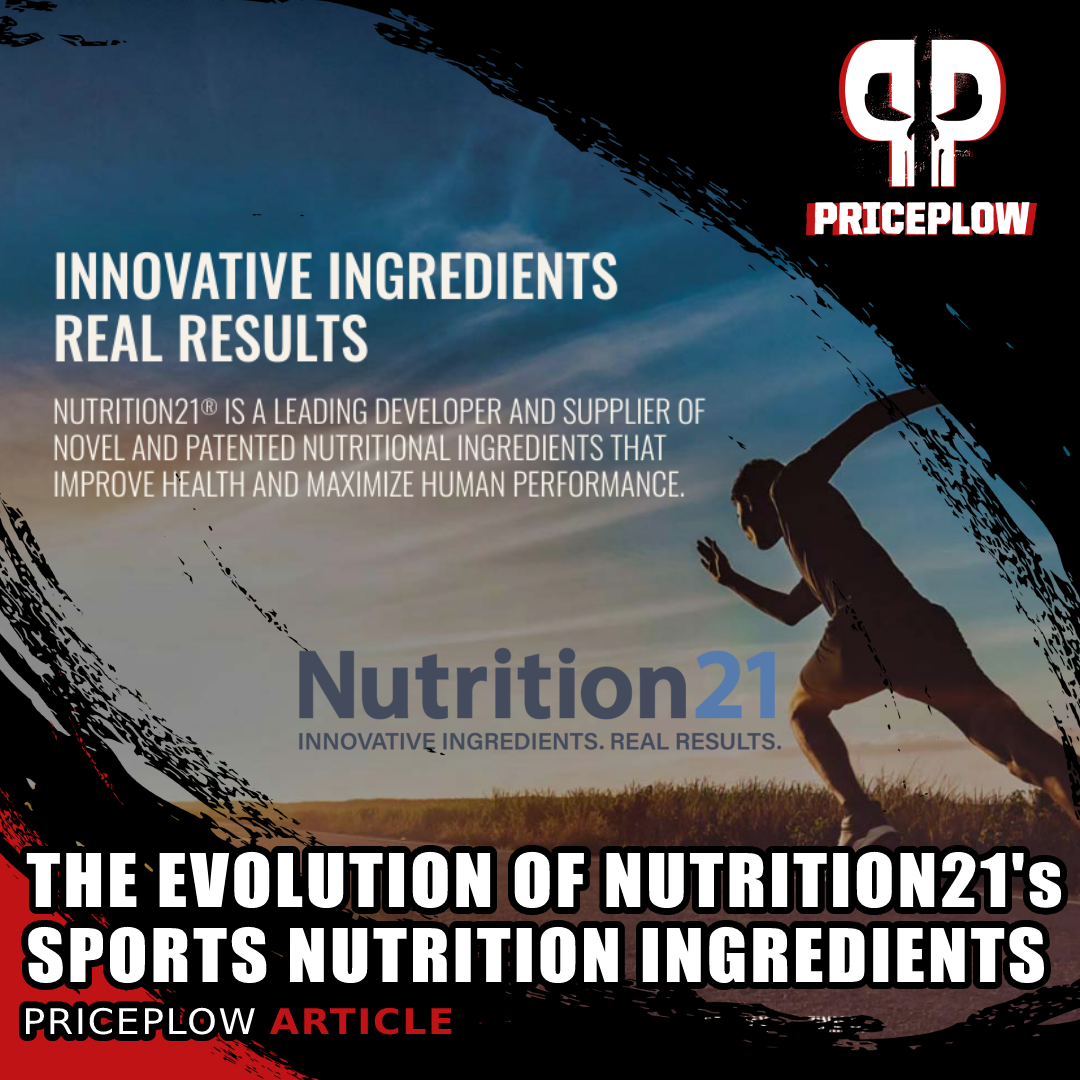
Confused about Nutrition21's Sports Nutrition Ingredients? Our previous Nutrition21 article explains their key characteristics, differences, and how they've come to market over time
Thanks to the inclusion of Velositol, Outright Breakfast Bars aren't just for breakfast -- they're incredible as a post-workout protein boost as well!
Conclusion: We expect more Velositol in protein bars
The trifecta of a growing protein bar market, a supply squeeze on protein, and Velositol's growing body of research makes for a combination that's pushing supplement formulators to do more with less. This can be done efficaciously and ethically using Velositol, and we believe more protein bar manufacturers should look into the research when developing their next bar.
Nutrition21 is consistently pushing the boundaries of the sports nutrition industry, conducting scientific studies and promoting research-backed ingredients. When it comes to chromium and chromium-based ingredients, there's no better expert than Nutrition21.
Chromax chromium picolinate works fantastically as a chromium supplement ingredient, but when it comes to protein bars, we see the inclusion of Velositol as the next big thing.
The Last Five PricePlow Articles Mentioning Velositol
*In a preclinical study.
See the Velositol-infused Outright Breakfast Bar and Sign Up for Nutrition21 News Alerts
Get Price Alerts
No spam, no scams.
Disclosure: PricePlow relies on pricing from stores with which we have a business relationship. We work hard to keep pricing current, but you may find a better offer.
Posts are sponsored in part by the retailers and/or brands listed on this page.
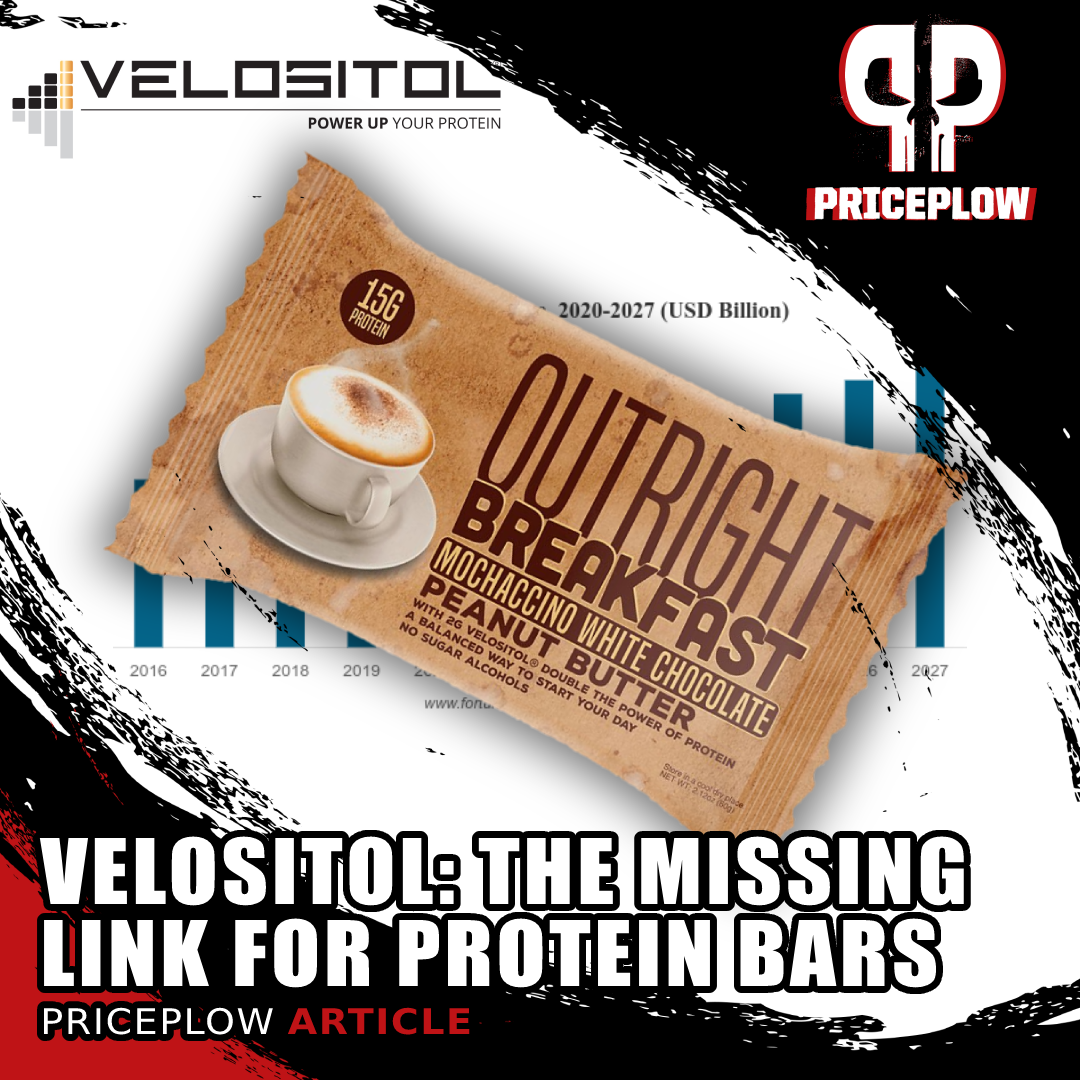


Comments and Discussion (Powered by the PricePlow Forum)